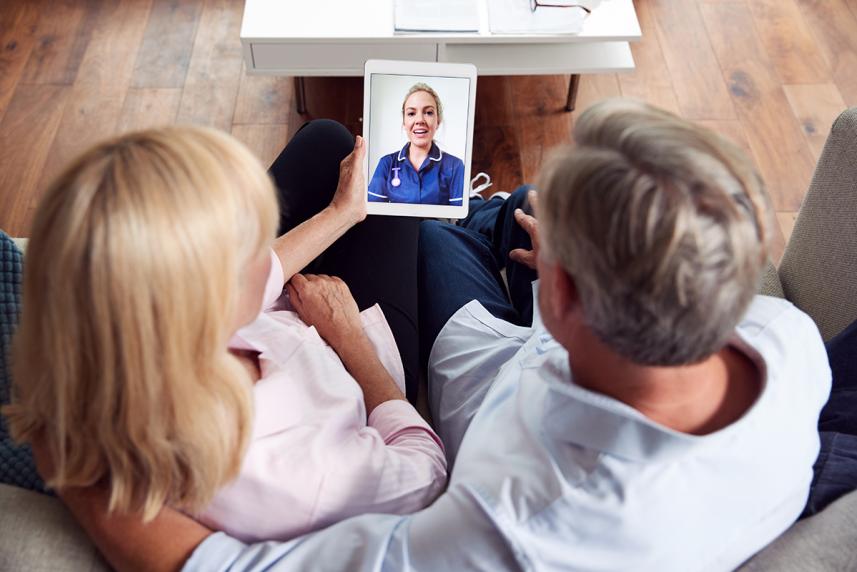The doctor will call you now: A beginner’s guide to virtual care
The top questions about virtual care appointments answered.

What is virtual care?
Simply put, it’s the care you receive from your doctor or other health care provider when you can’t make it to a doctor’s office. It can be a video chat, or you can use an app or online portal. In some cases, even a phone call with your doctor can count as an exam. (More on that later.)
Virtual care dates back as far as 1959, when the Nebraska Psychiatric Institute started using video conferencing to provide therapy to hospitalized patients.
You may also hear the terms telehealth and telemedicine, which are both umbrella terms for the many interactive technologies that doctors use to provide care from a distance. Think of virtual care as the toolbox that holds all those technologies and tools.
When should I use virtual care?
Chest pain, breathing problems, broken bones, and severe wounds require emergency care. But if you have a sore throat, a mysterious rash, or you are due for a routine checkup for an ongoing health issue, a virtual care call is a good alternative.
Do health plans or Medicare cover virtual care?
For Independence Blue Cross Medicare Advantage members, MDLIVE* is a virtual care service that’s available to you. This service lets you get medical help from the comfort of your home, or wherever you happen to need it. MDLIVE allows you to visit virtually or by phone with a board-certified doctor when your regular physician is unavailable, including during evenings, weekends, and holidays. MDLIVE doctors can treat many common medical conditions over the phone, such as allergies, common cold/flu, insect bites, nausea/vomiting, or sore throat. They can assess your symptoms and help determine the next steps, including prescriptions for necessary medications. It’s a quick, effective way to save on out-of-pocket medical costs and get care for nonemergency medical situations. Visit ibxmedicare.com/mdlive, download the MDLIVE app on your smartphone, and/or call 1-888-961-4188 (TTY/TDD: 1-800-770-5531).
How should I prepare for my virtual care visit?
Turning your home into an exam room requires a little prep. Start here:
1. Make the call. Schedule your visit as you normally would, either by calling your doctor’s office or going to your online patient portal. Pay attention to any instructions or steps to take before the video visit.
2. Do a technology check. Some doctors and clinics will have specially designed virtual care software built into their patient portals, making video visits as easy as clicking on a button once you’ve logged in.
For others, you may need to download an app, while still others will simply need you to use video chat services.
3. Gather your background material. Jot down your symptoms, including details such as when they started, how often they occur, and so on.
4. Draft an agenda. Know what questions and concerns you want to cover with the doctor —anything you think is important. Write down these thoughts and have them in front of you before the visit begins.
5. Set the stage. While a smartphone may suffice, using a computer, laptop, or tablet with a bigger screen will be a plus.
Set yourself up in a quiet room with good lighting. Ideally, the light source should be behind the camera, so you’re illuminated.
6. Be comfortable with your equipment. Make sure you know how to operate the camera feature on your phone, tablet, or computer. During the appointment, your doctor may ask you to pull the camera closer, or zoom in on a body part — say, to look at a rash or an injury.
If you’re not comfortable with technology, you can ask a trusted family member or caregiver to help you during the appointment — just let the doctor know that they’re there.
7. Be on time. When your appointment time arrives, follow the instructions you were given to connect with your doctor. In some cases, the doctor may call you, or you may be given a phone number or web link to join a video conference line.
* Virtual care is provided by MDLIVE, an independent company.



